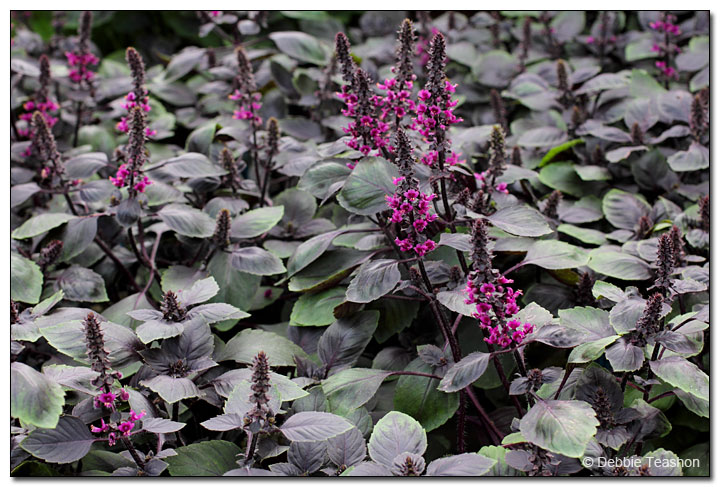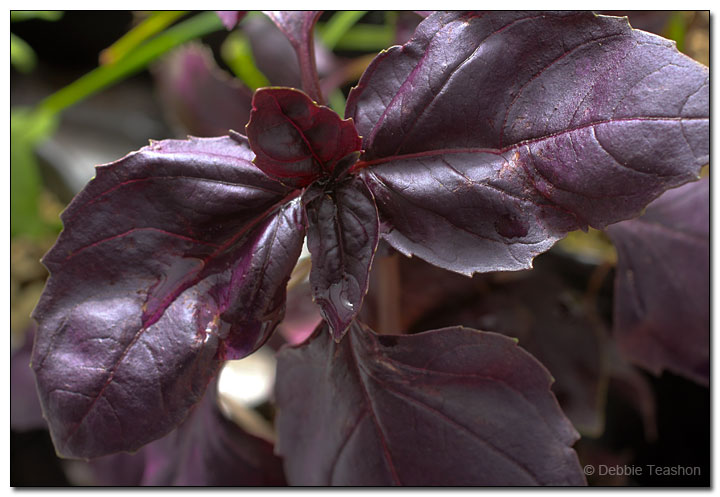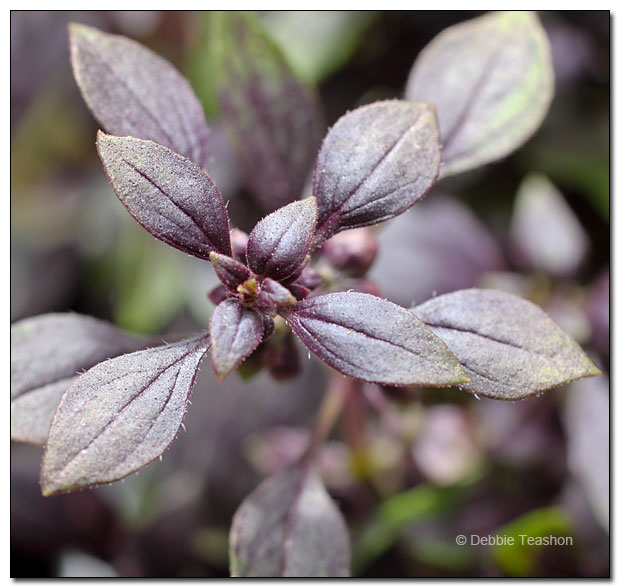Hail to the King — Basil
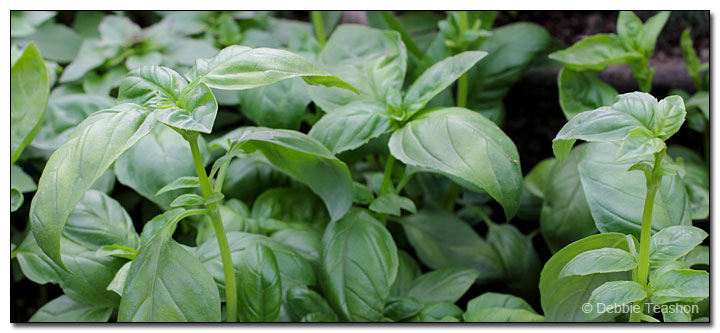
The Greeks held high regard for basil (Ocimum basilicum) and named the herb Vasilikos (pronounced vah-see-lee-KOHS), which means king. In India, basil is favored as a sacred herb.
Throughout the centuries, the plant was considered the herb of love, yet on the other hand, it represented hatred for your enemies. Superstitious assertions had witches using basil for evil deeds. Others claimed you could attract a beautiful woman with the scent of a basil leaf. The Greeks and the Romans shouted at the seeds as they sowed them, throwing a few curse words in for good measure — believing the basil would not thrive without the commotion.
Basil should be the king of the kitchen garden, with at least one variety of basil growing in it. The house chefs can snip off what they need whenever they need to spice up their culinary dishes.
The best part about growing basil in your garden is its fresh-from-the-garden taste. Freezing torn leaves, or blending them with water and freezing them into ice cubes, is the next best thing to fresh. Popping the frozen cubes into freezer containers can supply you with basil for months after it’s too cold to grow it outside.
You can dry the leaves for later use, but the herb loses too much flavor with that method. Leave the dried basil in spice jars for those who don’t know better, and use fresh whenever you can. If you can’t grow the herbs in winter and run out of frozen basil cubes, buy fresh basil from a produce market.
Growing Basil
Basil needs a lot of heat to grow and be healthy; our mild maritime climate makes it tricky for the first-time basil grower. If you plant basil seedlings outside before it’s warm, the plants sit there and sulk. Sowing seeds when it’s too cold, they won’t germinate.
Our cold-to-cool springs and slow-warming soil make for a late start for this annual herb. Once you understand its basic needs, you can grow basil, and you don’t need to curse or shout at it for the plant to thrive.
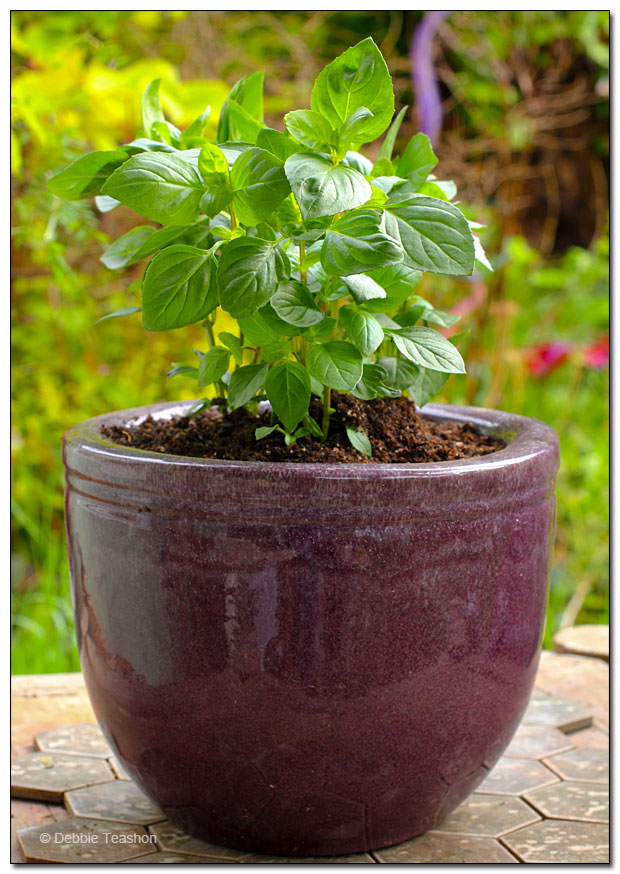
Warning: Growing fresh basil is addictive. You may grow the plant year-round because you can’t get enough of its taste.
If you’ve never grown a seed before, basil is an easy one to sow and germinate. Planting the seed early indoors, under lights, and placed on a heat mat can get you some fresh basil proliferating, even during the colder times of the year. Once the end of May or June comes around, you can grow the herb outdoors in full sun to your heart’s content.
Take a small pot and fill it with a sterile seed-starting medium. Sow a few seeds and lightly cover them with soil. Water the freshly sown seeds by placing the pot in a shallow tray of warm water until the top is glistening with moisture.
After a few days, the seeds germinate. When they grow beyond the first leaves, pinch out the growing tips to encourage the plants to be bushier. When the weather is warm enough, acclimate your plants to outdoor life. Plant them in rich, fertile soil in full sun, and after the basil puts on a decent burst of growth, harvest, harvest, harvest.
You don’t need a lot of room for basil. A container can hold several varieties you can keep by your back door. Terracotta pots work well for container growing. When it is time to cook, step outside with scissors in hand, snip off as many leaves as you need, rinse them and toss them into your latest culinary delight. Cooking does not get any fresher (or tastier) than this!
Year-Round Growing
If you want fresh basil all year round, you will need a heated greenhouse. If a greenhouse isn’t feasible, you can grow your plants indoors. You will need a heat mat, fan (for air circulation) and grow lights for indoor growing. For best results, adjust the lights to always just above the plants.
You can also grow and clip the herb as a microgreen. Sow the seeds thickly and harvest them when the first true leaves appear on the seedlings—harvest by using a pair of scissors and cut them down to soil level.
Rinse your micro basil to clean any soil off the greens, then use them fresh in your favorite recipes. If you can’t use them right away, after rinsing them off, pat them dry and let them sit out until the water dries off. Seal them in a container and refrigerate them for up to a week.
Another way to keep them growing during the off-season months is by taking cuttings late in the season. Root them for growing indoors under lights or in a greenhouse.
Choosing the Varieties
Which basil varieties should you grow? Most basil varieties have handsome foliage; some have pretty, little stalks of flowers in hues of white to fuchsia pink. With so many cultivars to choose from, you can experiment with many variations for their flavor.
Which ones you choose to grow depends on what you plan to cook. The spicy, fragrant annual goes with almost everything culinary but especially marries well with tomatoes and tomato sauces. Salad, pesto and more traditional basil dishes might call for the lettuce-leaf basil with its milder flavor than the Italian large-leaf basil.
Cinnamon basil (Ocimum basilicum ‘Cinnamon’) is excellent for flavoring winter squashes. This basil combines the familiar basil flavor with a robust cinnamon taste.
Enhance chicken and fish dishes with the citrusy undertones of lemon basil (Ocimum basilicum var. citriodorum) and lime basil (Ocimum americanum). Both add a citrusy element to any dish they flavor.
Let your nose and taste buds be your guide to the tasteful world of basils.
Originally written for West Sound Home & Garden magazine 2015.

